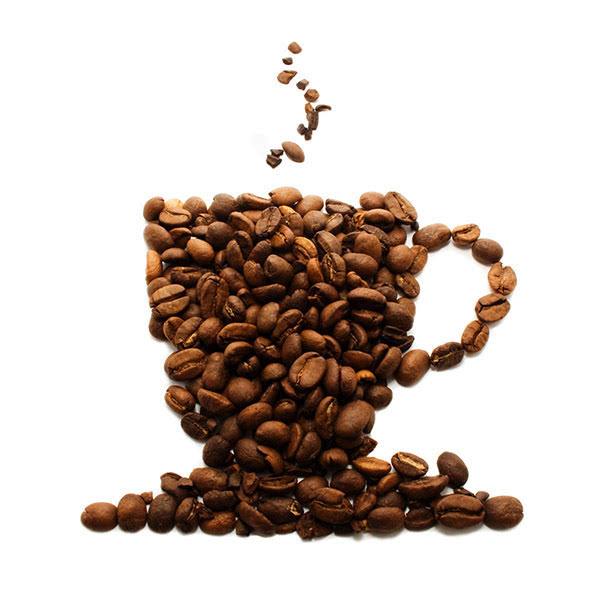It is expected that China's coffee market will maintain a high growth rate in the next five years.
Follow the caf é (Wechat official account vdailycom) and found that Beautiful Cafe opened a small shop of its own.
From 2011 to 2016, the annual compound growth rate of China's coffee market was 13.5%, and the market size reached 14.793 billion yuan in 2016. According to a survey in 12 inland cities, 32% of city dwellers drink coffee. Among them, young men and women, housewives and urban white-collar workers have become the groups with the fastest growth in drinking coffee. There are now at least 20,000 cities in the country, mainly concentrated in third-tier or above cities.
It is expected that China's coffee market will maintain a high growth rate in the next five years, with an annual compound growth rate of about 8.3%. By 2021, the size of China's coffee market will reach 22.069 billion yuan. With strong growth and rising consumption, cafes are constantly updated and upgraded.

Boutique
With the popularity of coffee culture, more and more experienced and exquisite coffee experts, automatic coffee machine brewing coffee has been difficult to meet their needs, they pursue more personalized, higher quality boutique coffee, keen on hand brewing, ice drop, siphon and other boutique coffee production methods.
It is said that the present state of the Japanese catering industry is the road of tomorrow for the development of China's catering industry, and so is coffee. In Japan, there are more than 80,000 cafes in Tokyo alone, each with outstanding tonality and splendor, and big international brands such as Starbucks are not at ease. In recent years, they have begun to take the boutique route and find ways to increase their competitiveness.
Product creativity
There is a 28 rule in the catering industry, that is, 80% of sales are borne by 20% of products; the catering industry is a very easy homogenization format, which means that iterative product upgrading is very important. From Flat White, nitrogen brewing to Asskicker espresso. More and more creative
Office coffee and takeout
Many small cafes in Hong Kong movies are opened in office buildings, which add a relaxed atmosphere to the office buildings and make the work fresh. The office building is the most concentrated place for coffee consumers, there are many people who drink coffee and it is convenient to provide consumption space for business people in the building, more and more cafes are locked in the office building.
Since last year in Beijing and Shanghai, the affordable office coffee market with low-cost operation has begun to develop, giving priority to delivery, radiating surrounding residential and office buildings. Office coffee is booming in first-tier cities because of the high westernization of lifestyle, high income levels, numerous foreign enterprises, and rigid needs such as meetings and overtime in first-tier cities.
Scene consumption is diversified, small and beautiful.
It is not easy for the catering industry to create a brand new product that catches the eye, which involves cultural and public acceptance of taste. You can try the "innovative scene", which can also bring unexpected results. Because of fierce competition, high rents and other pressures, cafes are becoming smaller and smaller, and are also breaking the limitations of traditional cafes.
Although the Chinese mainland coffee market is about 70 billion in size, it is only on a par with Taiwan, far behind South Korea and Japan, and has a pattern of ice and fire in both developed coastal cities and inland underdeveloped small cities. there is still a huge gap from the mature market, but there is also huge room for development.
Important Notice :
前街咖啡 FrontStreet Coffee has moved to new addredd:
FrontStreet Coffee Address: 315,Donghua East Road,GuangZhou
Tel:020 38364473
- Prev

Why does Korean coffee go from shining to declining in just 5 years?
South Korea has been invading culture with music, movies and TV dramas for more than a decade. Fashionable, romantic and aesthetic have become synonymous with Korean products. Cafes are no exception. Fashion and romance are prominent labels for almost all Korean families. Compared with Starbucks' high proportion of non-franchise policy, the rapid rise of Korean coffee is largely due to the opening up of the franchise model and co-operation mode. seven
- Next

August 2 Coffee prices quoted on exchanges at home and abroad
International Coffee ICE Intercontinental Exchange Coffee Index (raw beans) 141.75 cents / lb, equivalent to RMB quotation of about 20.984 yuan / kg up and down-0.25% compared with the previous trading day: coffee 09 contract (raw beans) 138.65 cents / lb, equivalent to RMB quotation of about 20.525 yuan / kg-0.25% Note: coffee 09 contract represents 2017
Related
- Why can American refills for free? The difference between Americano and American drip pot coffee
- Being chased out of the rain in front of Starbucks?! Store: Sheltering from rain under umbrellas poses a safety hazard
- The white moonlight has changed?! Lucky launches "Big Winter Pear American"
- Hand-brewed coffee three-stage method, high-sweet and universal brewing method to share! What does the high sweet water level of hand-brewed coffee mean?
- What is the difference between raw, refined and full espresso coffee? How to extract espresso and taste good?
- A complete list of coffee bean names and their meanings! What is Yejia Shefi coffee? Where is Mantelin coffee?
- What grade does Arida Manor Kaduai coffee beans belong to? What treatment is Arida ASD slow anaerobic sun exposure?
- The milk tea cup becomes smaller?! Overlord Tea Girl launches a new "Return to Yunnan" series
- Accused of selling counterfeit and high-priced coffee beans! Well-known boutique coffee brand "Oukelao" bowed and apologized!
- How to make espresso dumplings? Can I eat coffee and glutinous rice balls together?

